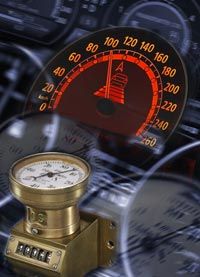Types of Speedometers
Advertisement
There are two types of speedometers: electronic and mechanical. Because the electronic speedometer is a relatively new invention— the first all-electronic speedometer didn't appear until 1993— this article will focus primarily on the mechanical speedometeror the eddy-current speedometer.
Otto Schulze, an inventor from Germany, filed the first patent for the eddy-current speedometer in 1902. Schulze conceived of the revolutionary device as a solution to a growing problem. Not only were cars becoming more popular, but they were also traveling faster. The average automobile's top speed just after the turn of the 20th century was 30 miles per hour, slow by today's standards but sizzling fast at a time when much of the world still moved at the leisurely pace of a horse-drawn carriage. As a result, serious accidents began to increase dramatically.
Schulze's invention allowed drivers to see exactly how fast they were traveling and to make adjustments accordingly. At the same time, many countries established speed limits and used police officers to enforce them. Early solutions required automobiles to have speedometers with two dials— a small dial for the driver and a much larger dial mounted so police could read it from a distance.
In the next section, we'll look at this design to understand the parts of an eddy-current speedometer.
